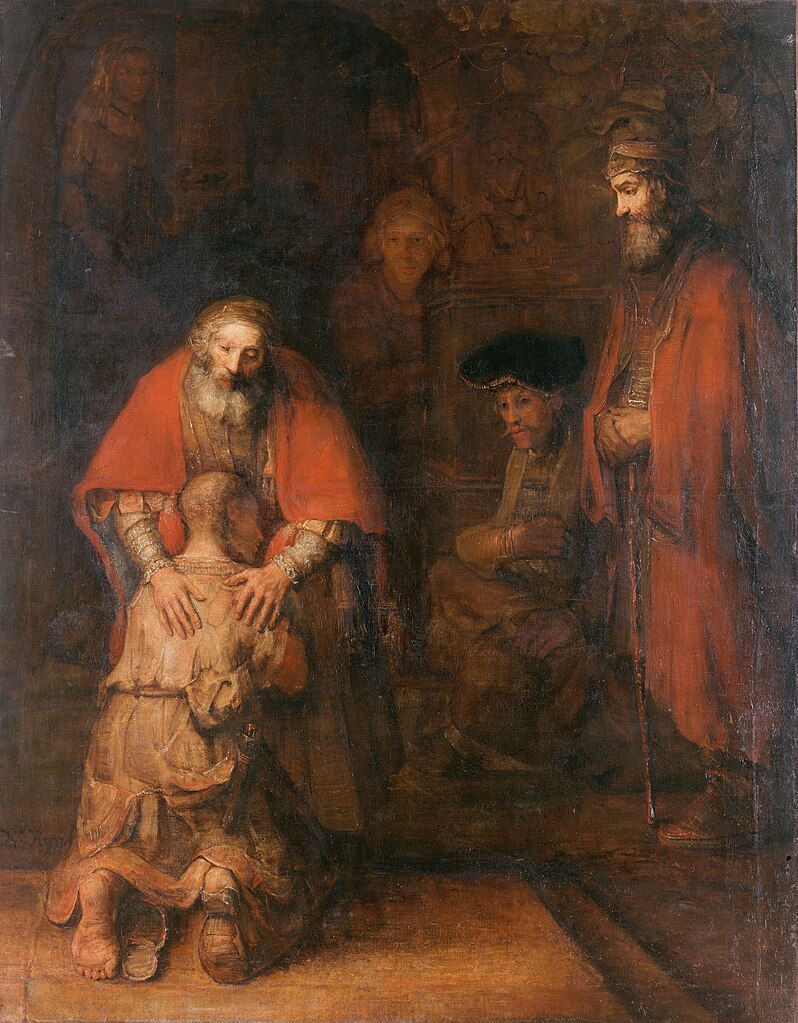Wednesday Devotional: His Greatest Painting
- cecil2748
- Mar 13, 2024
- 3 min read

Luke 15:11-31
At 26 years old, R.H. van Rijn became fascinated with the Parable of the Prodigal Son (Luke 15:11-31). He would draw sketches of the scene of the young man who went to his father after he had squandered his inheritance, seeking forgiveness and a job.
van Rijn kept thinking about how to paint this story. It wasn’t until he was 63 years old, only two years before his death, that van Rijn finally painted a masterpiece depicting the parable.
Some say it was his greatest painting, this man who went by the name associated with his first initial, Rembrandt.
Supposedly author and priest Henri Nouwen once studied this painting for eight hours. Perhaps we can spend a few minutes studying it ourselves.
Jesus told a story symbolizing our human tendency to disregard our Heavenly Father's love and providence to carve our own path, only for it to lead to sin and ruin. The climax of the parable is in Luke 15:20-24 (NIV), when the son comes to his senses and returns home.
So he got up and went to his father.
“But while he was still a long way off, his father saw him and was filled with compassion for him; he ran to his son, threw his arms around him and kissed him.
“The son said to him, ‘Father, I have sinned against heaven and against you. I am no longer worthy to be called your son.’
“But the father said to his servants, ‘Quick! Bring the best robe and put it on him. Put a ring on his finger and sandals on his feet. Bring the fattened calf and kill it. Let’s have a feast and celebrate. For this son of mine was dead and is alive again; he was lost and is found.’ So they began to celebrate.
Rembrandt chose this moment of reconciliation in his painting. The son's head is shaved, and he is disheveled and partly shoeless, bearing all the marks of an outcast. The father is tender; Rembrandt depicted the father with one masculine hand (his left) and one more feminine hand (his right) to indicate full parental love and care. Dressed in finery, the older son, as noted by WidowCranky.com, represents a stream of thinking which is linked to law, reward and merit.
I've always been fascinated by this parable as one that raises as many questions as it provides answers. A central question is, with which character do you identify in this story? Typically we would answer, the prodigal needing forgiveness. But there are times we are judgmental, like the older son. There are times when we must forgive a prodigal in our life, like the father.
Let us be thankful for a loving father who takes us back in with his grace and forgiveness. Let us emulate him as we discard our judgmental nature and forgive others.
The final episode of the Top 11 Themes of Jesus podcast season is now available, regarding the number one theme of prophecy. Of all the topics Jesus discussed, this theme is what came out of his mouth the most according to my study of the Gospels. I explain what prophecy means and the four main ways in which Jesus expressed it, then I summarize the series with further insights. You can search for "Cecil Taylor Monthly Podcasts" on Spotify, Apple, Audacy, and Podbean, or access all those podcast areas plus a copy of the podcast on the Cecil Taylor Ministries YouTube channel by visiting the launch site of CecilTaylorMinistries.com/free-content.




Comments